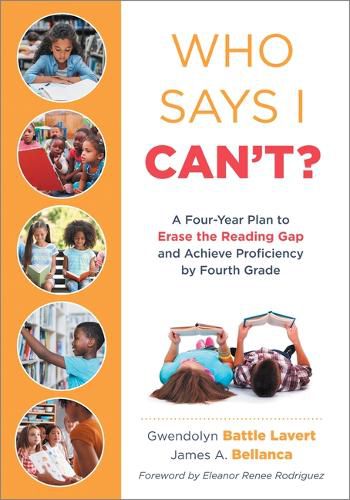Readings Newsletter
Become a Readings Member to make your shopping experience even easier.
Sign in or sign up for free!
You’re not far away from qualifying for FREE standard shipping within Australia
You’ve qualified for FREE standard shipping within Australia
The cart is loading…






Eliminating the reading achievement gap is essential for long-term school success. In Who Says I Can't?, the authors explain how to close the third-grade reading gap for marginalized students. They supply educators with research, strategies, structure, and support necessary to revise current practices so that all children, regardless of ethnic, racial, or socioeconomic deterrents, will read for meaning before grade 4.
K-4 educators can use this book to:
Learn current research on the third-grade reading gap and why it matters Understand the importance of teaching phonics and phonemics in the early grades Explore how to expand vocabulary for students below target levels Guide students on forming meaning in cognitive and metacognitive ways Provide reading material with diverse characters to encourage investment and belonging
Contents:
Foreword Introduction: A Necessary Pathway Chapter 1: Engage With the Learning-to-Read Challenge Chapter 2: Acknowledge That Yes, It Is About the Brain Chapter 3: Make Meaning Visible Chapter 4: Use the Reciprocal Teacher's Playbook Chapter 5: Hear It First With Phonemics and Ensure Mastery Chapter 6: Make the Phonics Connection Chapter 7: Use Patterns to Achieve Vocabulary Fluency Chapter 8: Learn to Read for Meaning Chapter 9: Prioritize Equity Epilogue: A Dream Revisited Appendix: Lesson Design Templates and Further Reading References and Resources Index
$9.00 standard shipping within Australia
FREE standard shipping within Australia for orders over $100.00
Express & International shipping calculated at checkout
Eliminating the reading achievement gap is essential for long-term school success. In Who Says I Can't?, the authors explain how to close the third-grade reading gap for marginalized students. They supply educators with research, strategies, structure, and support necessary to revise current practices so that all children, regardless of ethnic, racial, or socioeconomic deterrents, will read for meaning before grade 4.
K-4 educators can use this book to:
Learn current research on the third-grade reading gap and why it matters Understand the importance of teaching phonics and phonemics in the early grades Explore how to expand vocabulary for students below target levels Guide students on forming meaning in cognitive and metacognitive ways Provide reading material with diverse characters to encourage investment and belonging
Contents:
Foreword Introduction: A Necessary Pathway Chapter 1: Engage With the Learning-to-Read Challenge Chapter 2: Acknowledge That Yes, It Is About the Brain Chapter 3: Make Meaning Visible Chapter 4: Use the Reciprocal Teacher's Playbook Chapter 5: Hear It First With Phonemics and Ensure Mastery Chapter 6: Make the Phonics Connection Chapter 7: Use Patterns to Achieve Vocabulary Fluency Chapter 8: Learn to Read for Meaning Chapter 9: Prioritize Equity Epilogue: A Dream Revisited Appendix: Lesson Design Templates and Further Reading References and Resources Index